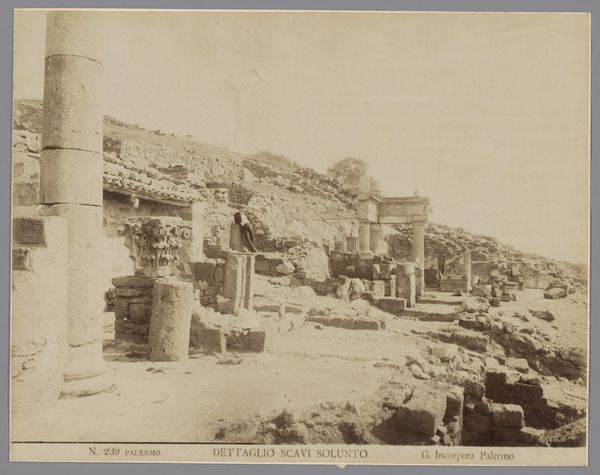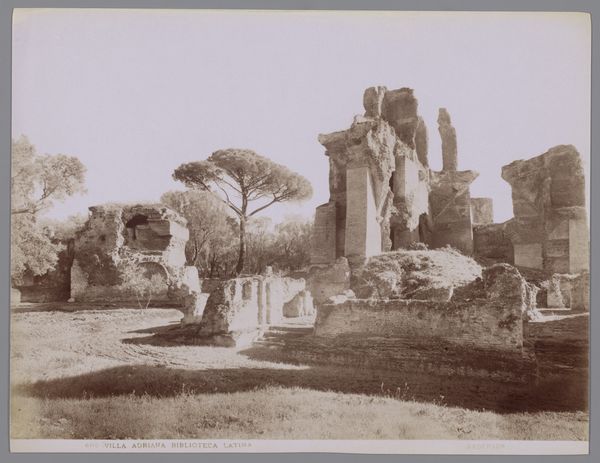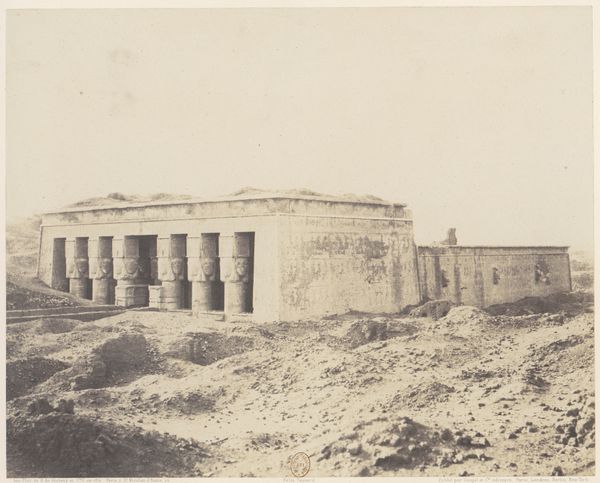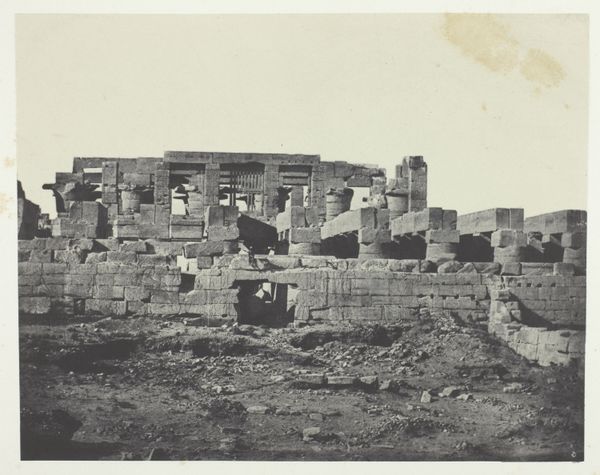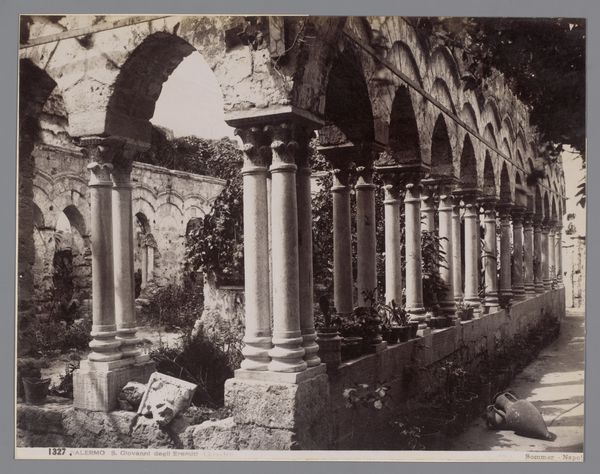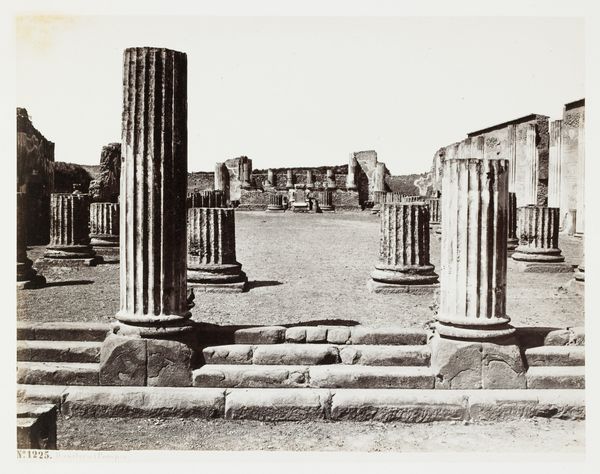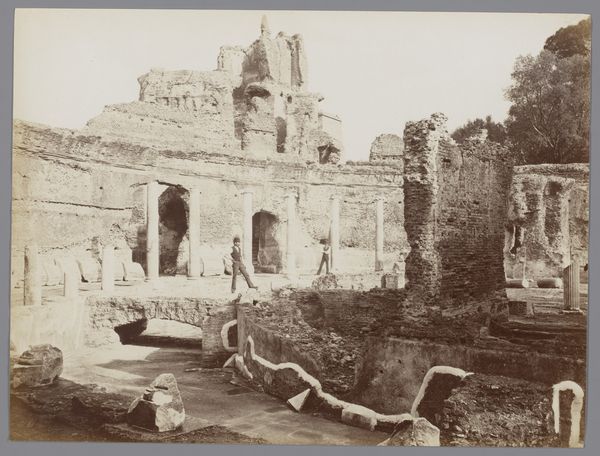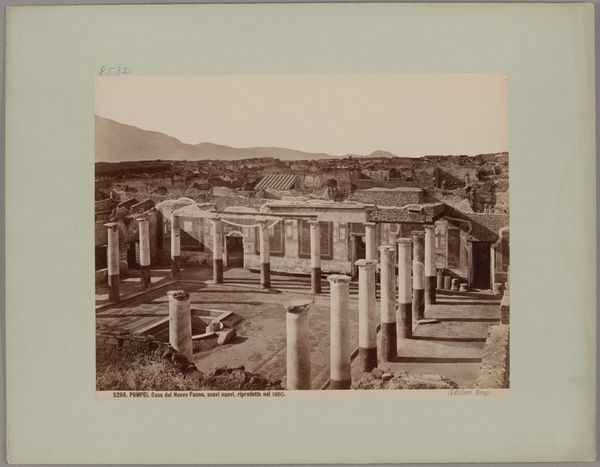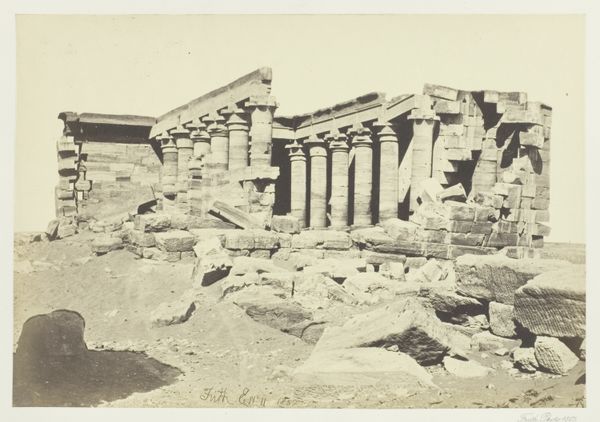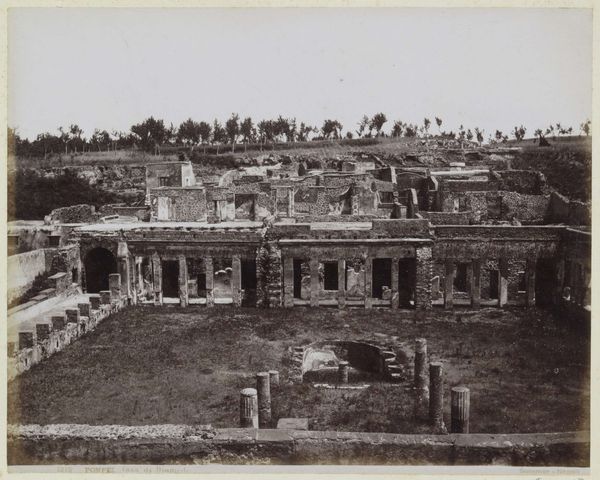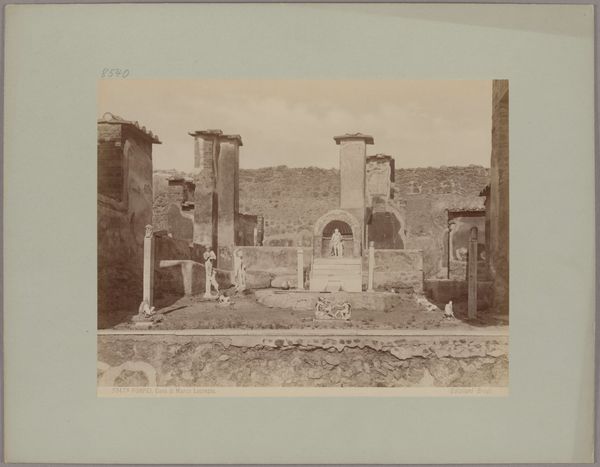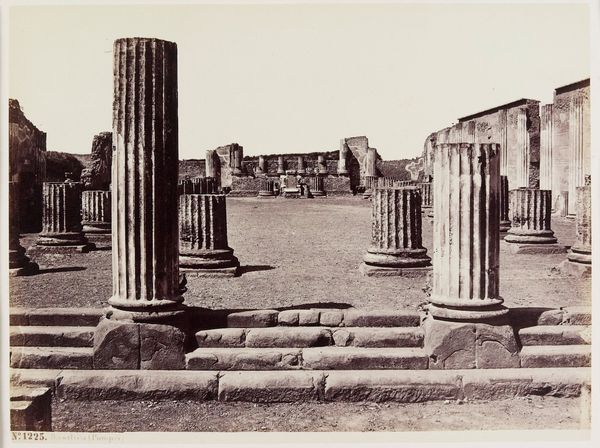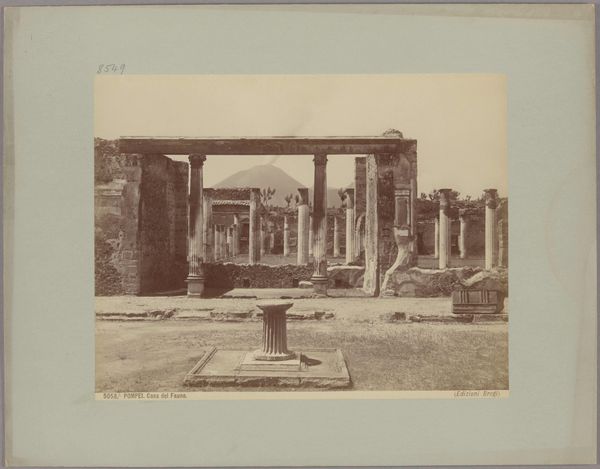
Dimensions: height 192 mm, width 252 mm
Copyright: Rijks Museum: Open Domain
Editor: So, this is Giacomo Brogi’s gelatin silver print, "Temples of Juno at Paestum," taken sometime between 1864 and 1881. It's incredible how these ancient ruins are juxtaposed with, well, ordinary life, and the almost Romantic decay of the site. What catches your eye when you look at it? Curator: It is more than a mere image; it’s a cultural artifact that invites us to reflect on power, memory, and the narratives we construct about the past. How do we reconcile the idealized vision of classical antiquity with the colonial gaze inherent in its photographic representation at this time? Consider that the archaeologist's or photographer's presence is almost as significant as the structures themselves. Who do you think these temples are *really* for? Editor: That’s a thought-provoking way to frame it. I hadn’t really considered the presence of the photographer *in* the photograph in that way. I guess I see it more literally as just a documentation. Curator: Precisely! And how does photography itself reinforce certain power structures? Brogi, in his pursuit of capturing these monuments, also participates in a larger project of cultural appropriation and representation that serves particular audiences and confirms prevailing views on civilization and its origins. Does the way that people seem to stroll the ruins casually change that at all? Editor: That’s fascinating. It suggests a certain nonchalance toward the weight of history or an attempt to normalize it, maybe? Like it’s been conquered, documented, and now, casually strolled through. Curator: Exactly. We should always critically engage with images like this, questioning whose story is being told, whose gaze is privileged, and what socio-political agendas might be at play. We bring a critical lens to visual representations. It is how we excavate hidden meanings and challenge dominant narratives. Editor: I'm going to carry this perspective with me. It adds a whole other layer to interpreting art beyond the surface aesthetics or historical context alone. Thank you!
Comments
No comments
Be the first to comment and join the conversation on the ultimate creative platform.
